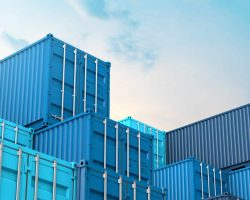 The overall situation related to North American ports, rail lines and truck carriers has undergone a complete turnaround in comparison to 2022. As we painfully recall, 2022 was a year in which port congestion, rail terminal backlogs and a shortage of truck carrier availability was the norm. This was especially pronounced from mid to late 2022, in which high import volumes completely overwhelmed the supply chains in North America, resulting in cargo delays and, even worse, substantial extra fees borne by shippers, as the fluid movement of freight was considerably compromised.
The overall situation related to North American ports, rail lines and truck carriers has undergone a complete turnaround in comparison to 2022. As we painfully recall, 2022 was a year in which port congestion, rail terminal backlogs and a shortage of truck carrier availability was the norm. This was especially pronounced from mid to late 2022, in which high import volumes completely overwhelmed the supply chains in North America, resulting in cargo delays and, even worse, substantial extra fees borne by shippers, as the fluid movement of freight was considerably compromised.
A year later, the picture is much different, mainly due to reduced ocean import volume, most noticeably from Asia, resulting in a supply chain in which delays, port/rail congestion and lack of truck carrier availability are things of the past.
Canada’s largest port, the Port of Vancouver, like many major container ports in North America, experienced a 14% drop in containerized imports throughout the first six months of 2023, due to a cooling economy and well-stocked retailer inventories.
As for the U.S., on the year, up to September 2023, Los Angeles, the largest container port in the country, has moved around 5.65 million TEUs and Long Beach, the second largest U.S. intermodal port, has moved around 4.99 million TEUs – down 21% and 24.4%, respectively from the same period last year. Coupled with this, North American container ports experienced a 67.2 percent reduction in vessel waiting times during the second quarter and stable import container dwell times of around three days, further indicating improved efficiency.
In terms of North American intermodal rail volume, it is down 6% through the first eight months of 2023. As such, congestion at rail terminals, which can greatly affect the flow of cargo, is minimal and no longer posing any significant issues. In terms of intermodal truck carriers, who were severely compromised in 2022 due to excessive volumes, they are now functioning normally with adequate equipment availability and proper delivery timeframes being adhered to.
While all of the above is welcome news and, with ocean carrier rate levels remaining stable, this should stimulate renewed demand and increase in shipping volumes. However, predicting what is in store for 2024 is somewhat of a mystery. Most analysts state the biggest supply chain challenge for 2024 does not relate to product shortages, but rather dealing with excessive inventory and many experts predict inventory levels may not return to normal until well into 2024.
For more information, contact David Lychek, Director – Ocean & Air Services.
















